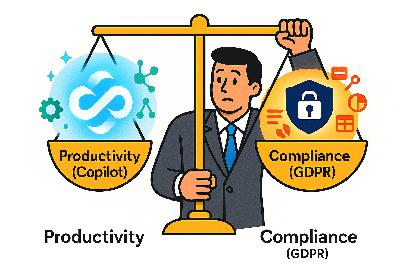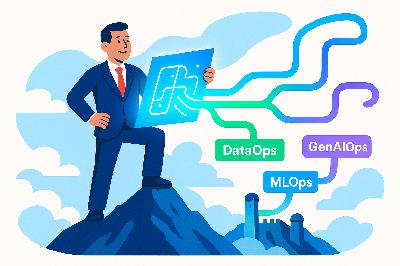Stop Writing GRC Reports: Use This AI Agent Instead
Description
Opening — The Pain of Manual GRC
Let’s talk about Governance, Risk, and Compliance reports—GRC, the three letters responsible for more caffeine consumption than every SOC audit combined. Somewhere right now, there’s a poor analyst still copying audit logs into Excel, cell by cell, like it’s 2003 and macros are witchcraft. They’ll start with good intentions—a tidy workbook, a few filters—and end up with forty tabs of pivot tables that contradict each other. Compliance, supposedly a safeguard, becomes performance art: hours of data wrangling to reassure auditors that everything is “under control.” Spoiler: it rarely is.
Manual GRC reporting is what happens when organizations mistake documentation for insight. You pull data from Microsoft Purview, export it, stretch it across spreadsheets, and call it governance. The next week, new activities happen, the data shifts, and suddenly, your pristine charts are lies told in color gradients. Audit trails that should enforce accountability end up enforcing burnout.
What’s worse, most companies treat Purview as a vault—something to be broken into only before an audit. Its audit logs quietly accumulate terabytes of data on who did what, where, and when. Useful? Absolutely. Readable? Barely. Each entry is a JSON blob so dense it could bend light. And yes, you can parse them manually—if weekends are optional and sanity is negotiable.
Now, contrast that absurdity with the idea of an AI Agent. Not a “magic” Copilot that just guesses the answers, but an automated, rules-driven agent constructed from Microsoft’s own tools: Copilot Studio for natural language intelligence, Power Automate for task orchestration, and Purview as the authoritative source of audit truth. In other words, software that does what compliance teams have always wanted—fetch, analyze, and explain—with zero sighing and no risk of spilling coffee on the master spreadsheet.
Think of it as outsourcing your GRC reporting to an intern who never complains, never sleeps, and reads JSON like English. By the end of this explanation, you’ll know exactly how to build it—from connecting your Purview logs to automating report scheduling—all inside Microsoft’s ecosystem. And yes, we’ll cover the logic step that turns this from a simple automation into a fully autonomous auditor. For now, focus on this: compliance shouldn’t depend on caffeine intake. Machines don’t get tired, and they certainly don’t mislabel columns.
There’s one logic layer, one subtle design choice, that makes this agent reliable enough to send reports without supervision. We’ll get there, but first, let’s understand what the agent actually is. What makes this blend of Copilot Studio and Power Automate something more than a flow with a fancy name?
Section 1: What the GRC Agent Actually Is
Let’s strip away the glamour of “AI” and define what this thing truly is: a structured automation built on Microsoft’s stack, masquerading as intelligence. The GRC Agent is a three-headed creature—each head responsible for one part of the cognitive process. Purview provides the raw memory: audit logs, classification data, and compliance events. Power Automate acts as the nervous system: it collects signals, filters noise, and ensures the process runs on schedule. Copilot Studio, finally, is the mouth and translator—it takes the technical gibberish of logs and outputs human-readable summaries: “User escalated privileges five times in 24 hours, exceeding policy threshold.” That’s English, not JSON.
Here’s the truth: 90% of compliance tasks aren’t judgment calls—they’re pattern recognition. Yet, analysts still waste hours scanning columns of “ActivityType” and “ResultStatus” when automation could categorize and summarize those patterns automatically. That’s why this approach works—because the system isn’t trying to think like a person; it’s built to organize better than one.
Let’s break down those components. Microsoft Purview isn’t just a file labeling tool; it’s your compliance black box. Every user action across Microsoft 365—sharing a document, creating a policy, modifying a retention label—gets logged. But unless you’re fluent in parsing nested JSON structure, you’ll never surface much insight. That’s the source problem: data abundance, zero readability.
Next, Power Automate. It’s not glamorous, but it’s disciplined. It triggers on time, never forgets, and treats every step like gospel. You define a schedule—say, daily at 8 a.m.—and it invokes connectors to pull the latest Purview activity. When misconfigured, humans panic; when misconfigured here, the flow quietly fails but logs the failure in perfect detail. Compliance loves logs. Power Automate provides them with religious regularity.
And finally, Copilot Studio, which turns structured data into a narrative. You feed it a structured summary—maybe a JSON table counting risky actions per user—and it outputs natural language “risk summaries.” This is where the illusion of intelligence appears. It’s not guessing; it’s following rules embedded in the prompt you design. For example, you instruct it: “Summarize notable risk activities, categorize by severity, and include one recommendation per category.” The output feels like an analyst’s memo, but it’s algorithmic honesty dressed in grammar.
Now, let’s address the unspoken irony. Companies buy dashboards promising visibility—glossy reports, color-coded indicators—but dashboards don’t explain. They display. The GRC Agent, however, writes. It translates patterns into sentences, eliminating the interpretive gap that’s caused countless “near misses” in compliance reviews. When your executive asks for “last month’s risk patterns,” you don’t send them a Power BI link you barely trust—you send them a clean narrative generated by a workflow that ran at 8:05 a.m. while you were still getting coffee.
Why haven’t more teams done this already? Because most underestimate how readable automation can be. They see AI as unpredictable, when in fact, this stack is deterministic—you define everything. The logic, the frequency, the scope, even the wording tone. Autonomy isn’t random; it’s disciplined automation with language skills.
Before this agent can “think,” though, it must see. That means establishing a data pipeline that gives it access to the right slices of Purview audit data—no more, no less. Without that visibility, you’ll automate blindness. So next, we’ll connect Power Automate to Purview, define which events matter, and teach our agent where to look. Only then can we teach it what to think.
Section 2: Building the Purview Data Pipeline
Before you can teach your GRC agent to think, you have to give it eyes—connected directly to the source of truth: Microsoft Purview’s audit logs. These logs track who touched what, when, and how. Unfortunately, they’re stored in a delightful structural nightmare called JSON. Think of JSON as the engineer’s equivalent of legal jargon: technically precise, practically unreadable. The beauty of Power Automate is that it reads this nonsense fluently, provided you connect it correctly.
Step one is Extract. You start with either Purview’s built‑in connector or, if you like pain, an HTTP action where you call the Purview Audit Log API directly. Both routes achieve the same thing: a data stream representing everything that’s happened inside your tenant—file shares, permission changes, access violations, administrator logins, and more. The more disciplined approach is to restrict scope early. Yes, you could pull the entire audit feed, but that’s like backing up the whole internet because you lost a PDF. Define what events actually affect compliance. Otherwise, your flow becomes an unintentional denial‑of‑service on your own patience.
Now, access control. Power Automate acts only as the permissions it’s granted. If your flow’s service account can’t read Purview’s Audit Log, your agent will stare into the void and dutifully report “no issues found.” That’s not reassurance; that’s blindness disguised as success. Make sure the service account has the Audit Logs Reader role within Purview and that it can authenticate without MFA interruptions. AI is obedient, but it’s not creative—it won’t click an authenticator prompt at 2 a.m. Assign credentials carefully and store them in Azure Key Vault or connection references so you remain compliant while keeping automation alive.
Once data extraction is stable, you move to Filter. No one needs every “FileAccessed” event for the cafeteria’s lunch menu folder. Instead, filter for real risk identifiers: UserLoggedInFromNewLocation, RoleAssignmentChanged, ExternalSharingInvoked, LabelPolicyModified. These tell stories auditors actually care about. You can filter at the query stage (using the API’s parameters) or downstream inside Power Automate with conditional logic—whichever keeps the payload manageable. Remember, you’re not hoarding; you’re curating.
Then comes the part that separates professionals from those who think copy‑paste is automation: Feed. You’ll convert those JSON blobs into structured columns—something your later Copilot module can interpret. A simple method is using the “Parse JSON” action with a defined schema pulled from a sample Purview event. If the terms “nested arrays” cause chest discomfort, welcome to compliance coding. Each property—UserId, Operation, Workload, ResultStatus, ClientIP—becomes its own variable. You’re essentially teaching your future AI agent vocabulary words before conversation begins.
At this stage, you’ll discover the existential humor of Microsoft’s data formats. Some audit fields present as arrays even when they hold



















